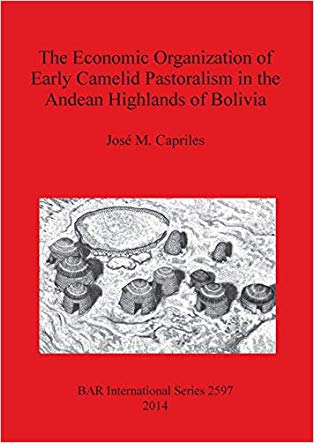 The domestication of South American camelids (llamas and alpacas) transformed the use of the Andean landscape. In the central altiplano of Bolivia, during the Formative Period (1500 BC ? AD 500) a cultural complex known as Wankarani developed. This book discusses the development of early camelid pastoralism by testing a set of hypotheses related to Wankarani economic organization. In contrast with previous ideas that suggested the emergence of sedentary agricultural villages in this region, settlement patterns, site layouts and faunal remains analyses support the interpretation that the development and persistence of mobile pastoralist communities occurred in the Bolivian central altiplano.
The domestication of South American camelids (llamas and alpacas) transformed the use of the Andean landscape. In the central altiplano of Bolivia, during the Formative Period (1500 BC ? AD 500) a cultural complex known as Wankarani developed. This book discusses the development of early camelid pastoralism by testing a set of hypotheses related to Wankarani economic organization. In contrast with previous ideas that suggested the emergence of sedentary agricultural villages in this region, settlement patterns, site layouts and faunal remains analyses support the interpretation that the development and persistence of mobile pastoralist communities occurred in the Bolivian central altiplano.
 The domestication of South American camelids (llamas and alpacas) transformed the use of the Andean landscape. In the central altiplano of Bolivia, during the Formative Period (1500 BC ? AD 500) a cultural complex known as Wankarani developed. This book discusses the development of early camelid pastoralism by testing a set of hypotheses related to Wankarani economic organization. In contrast with previous ideas that suggested the emergence of sedentary agricultural villages in this region, settlement patterns, site layouts and faunal remains analyses support the interpretation that the development and persistence of mobile pastoralist communities occurred in the Bolivian central altiplano.
The domestication of South American camelids (llamas and alpacas) transformed the use of the Andean landscape. In the central altiplano of Bolivia, during the Formative Period (1500 BC ? AD 500) a cultural complex known as Wankarani developed. This book discusses the development of early camelid pastoralism by testing a set of hypotheses related to Wankarani economic organization. In contrast with previous ideas that suggested the emergence of sedentary agricultural villages in this region, settlement patterns, site layouts and faunal remains analyses support the interpretation that the development and persistence of mobile pastoralist communities occurred in the Bolivian central altiplano.